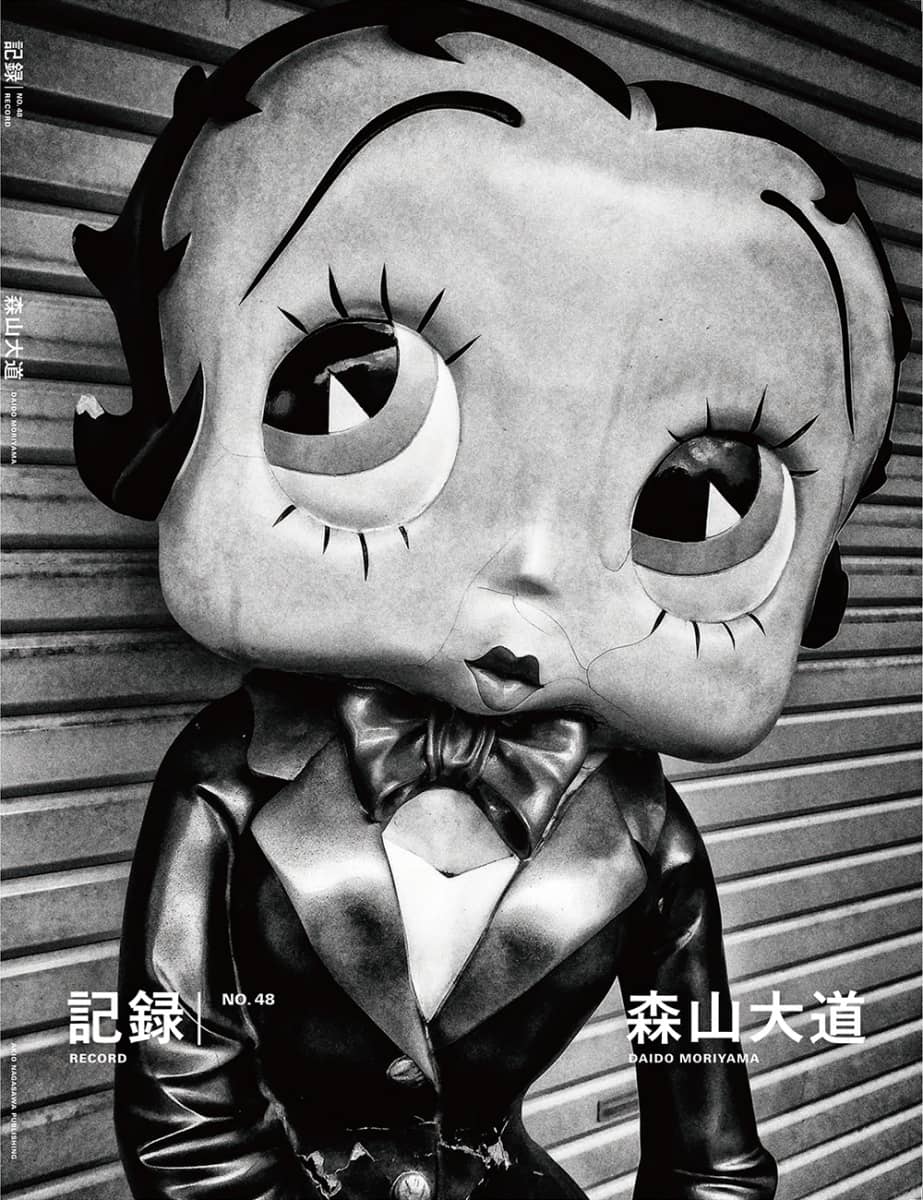Exemplaire Signé.
Il y a quelques jours dans la soirée, j’ai soudainement ressenti l’envie de prendre un train pour Yokosuka. Il était déjà après 20 heures quand je suis arrivé dans le quartier des divertissements « Wakamatsu Market » derrière la gare de Yokosuka Chuo sur la ligne Keihin, mais en raison de la pandémie en cours, les lumières des magasins normalement bondés étaient toutes éteintes. Les rues de la nuit s’étaient transformées en un endroit sombre et faiblement éclairé, avec la foule ivre habituelle nulle part en vue. J’ai finalement tenu mon appareil photo dans l’obscurité et pris une douzaine de photos, tout en marchant tout naturellement dans la rue principale en direction du quartier « Dobuita-dori ». Cependant, la plupart des magasins ici étaient également fermés et seules quelques personnes sont passées. C’était un spectacle vraiment triste et solitaire.
« Pas étonnant », murmure-t-on à soi-même, considérant que plus d’un demi-siècle s’était écoulé depuis le moment où j’ai erré avec l’appareil photo à la main autour de Yokosuka, en plein milieu de la guerre du Vietnam.
C’est ici à Yokosuka que j’ai décidé de me consacrer au style street snap, de sorte que la façon dont j’ai capturé le paysage urbain de Yokosuka a défini l’orientation future de mon travail photographique. J’avais 25 ans à l’époque, et j’en étais encore à ma première année en tant que photographe indépendant. Je me souviens à quel point j’étais déterminé et ambitieux quand j’ai commencé à photographier, impatient de transporter mes photos dans le bureau de Camera Mainichi et de les faire publier dans le magazine. C’était une époque où je passais mes journées à shooter en me promenant avec l’appareil photo à la main, de Yokosuka en banlieue, des rues principales aux ruelles. Je connaissais le fait que Yokosuka était une base militaire américaine depuis que j’étais enfant, et cela semblait aussi convenir à ma propre constitution, alors je pense que mon dévouement m’a aidé à surmonter la peur qui venait du revers de la médaille du plaisir de prendre des photos à Yokosuka.
Ce sont les résultats de seulement deux jours de shooting, mais quelque part entre les visages changeants de Yokosuka et ma propre réponse de la position d’un observateur un peu froid et distant dans le présent, je pense qu’ils reflètent le passage du temps et les transformations des temps. – Postface de Daido Moriyama
A few days ago in the evening, I suddenly felt the urge to take a train to Yokosuka. It was already after 8 PM when I arrived in the ”Wakamatsu Market” entertainment district behind Yokosuka Chuo Station on the Keihin Line, but due to the ongoing pandemic, the lights of the normally crowded shops were all switched off. The streets at night had turned into a bleak, dimly lit place, with the usual drunken crowd nowhere in sight. I eventually held my camera into the darkness and shot a dozen or so pictures, while walking quite naturally down the main street toward the “Dobuita-dori” district. However, most of the shops here were closed as well, and only a few people passed by. It was a truly sad and lonely sight.
“Little wonder,” I muttered to myself, considering that more than half a century had passed since the time I wandered with the camera in my hand around Yokosuka, right in the middle of the Vietnam War.
It was here in Yokosuka that I decided to devote myself to the street snap style, so the way I captured the Yokosuka cityscape defined the future direction of my photographic work altogether. I was 25 at the time, and was still in my first year as an independent photographer. I remember how determined and ambitious I was when I started shooting, eager to carry my pictures into the Camera Mainichi office and get them published in the magazine. It was a time when I spent my days just clicking away while walking around with the camera in my hand, from Yokosuka out into the suburbs, from the main streets into the back alleys.
I had been familiar with the fact that Yokosuka was a US military base since I was a kid, and it also somehow seemed to suit my own constitution, so I think my dedication helped me overcome the fearfulness that came on the flip side of the fun that was taking photos in Yokosuka.
These are the results of a mere two days of shooting, but somewhere between the changing faces of Yokosuka, and my own response from the position of a somewhat cold and distant observer in the present, I think they are reflecting the passage of time, and the transformations of the times. – Afterword by Daido Moriyama























